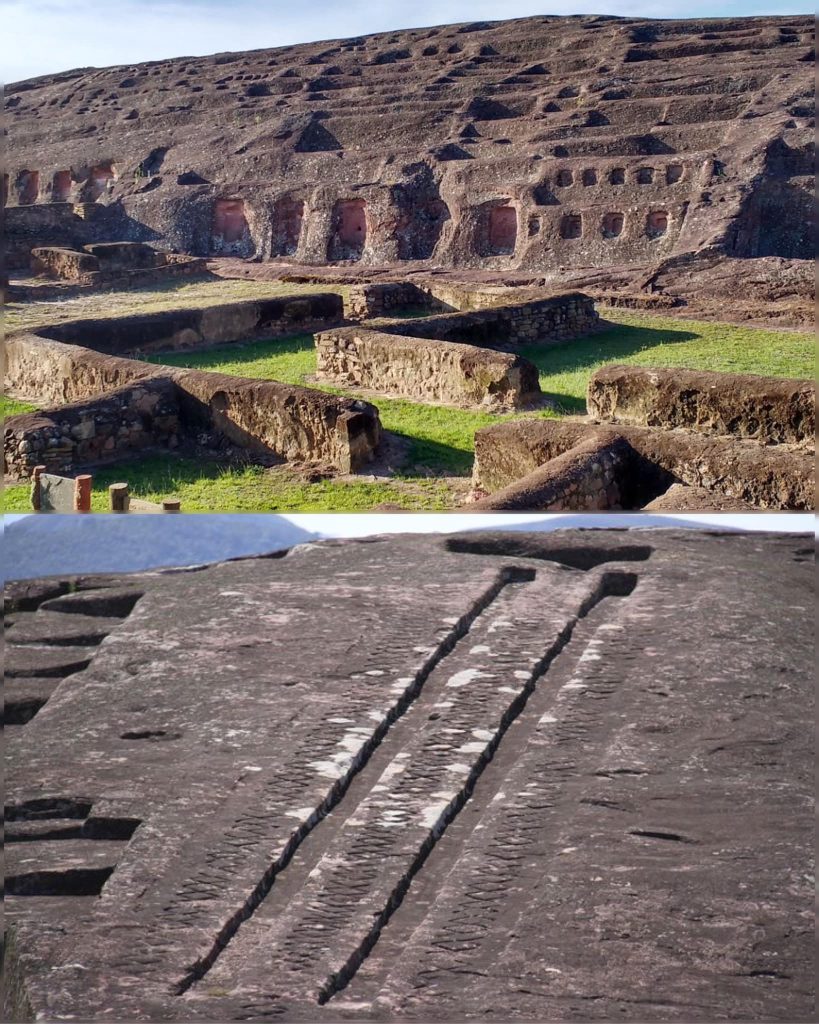Nestled deep in the mystical foothills of the Bolivian Andes lies a hidden marvel that has fascinated archaeologists, historians, and adventurers for generations. This extraordinary site, known as Samaipata, holds one of South America’s most enigmatic and visually stunning archaeological treasures. A place steeped in mystery, cultural fusion, and spiritual depth, Samaipata offers an unparalleled window into the ingenuity and artistic vision of ancient civilizations. At its core lies an immense monolithic structure called the Fortaleza, an awe-inspiring sandstone rock carved with precision and symbolism that continues to defy modern understanding.

The Fortaleza dominates the landscape—a massive formation that appears more like a colossal sculpture than a natural rock. What sets this geological giant apart is not just its size, but the remarkable carvings etched across its surface. These petroglyphs include a variety of forms, from geometric motifs and swirling patterns to representations of animals and otherworldly symbols. Despite the passing of centuries, the quality of the craftsmanship remains evident, revealing a level of skill that suggests not only artistic intent but also spiritual significance. The entire rock surface becomes a silent storyteller, whispering tales from a time long before written language captured human history.
Yet Samaipata is more than a gallery of ancient rock art. It is a masterclass in early engineering. The Fortaleza integrates platforms, terraces, and complex channels carved directly into the stone, pointing to an advanced understanding of structural planning and hydrological systems. These architectural elements were not random; they followed a distinct pattern and served a purpose that likely went beyond the spiritual. Many researchers propose that the site may have functioned as an astronomical observatory, allowing its ancient inhabitants to track celestial movements, solstices, and equinoxes with astonishing precision. Such a theory gains support from the alignments found within the site’s carvings and structures, many of which correspond with key astronomical events.
Geographically, Samaipata occupied a uniquely strategic position, situated between the towering Andes and the lush lowlands of the Amazon. This location transformed it into a vital cultural and commercial crossroads. Evidence unearthed from the site points to interactions between the highland Andean societies and the forest-dwelling Amazonian peoples. Over time, Samaipata became a melting pot of cultural expressions, with pre-Inca and Inca civilizations both leaving their mark. The architectural blend seen in the Fortaleza reflects this fusion—where elements of Andean symmetry and Amazonian fluidity coexist in a harmonious balance. Symbols from both worlds can be seen in the carvings, hinting at rituals, mythologies, and belief systems that converged in this sacred space.
Much of Samaipata’s function remains cloaked in mystery, but there is broad consensus that it played a central role in ceremonial life. Many scholars believe that this place was more than just a passive backdrop to rituals—it was an active participant. The alignment of platforms and carvings with astronomical phenomena suggests a deep understanding of the stars, perhaps tied to agricultural cycles or spiritual calendars. Priests or shamans may have performed sacred ceremonies here, timed precisely with the changing heavens, invoking blessings for crops, rainfall, or divine protection. The site seems to embody a connection between earth and sky, making it a sacred axis where human life intersected with cosmic forces.
In recognition of its immense cultural and historical value, UNESCO granted Samaipata the status of World Heritage Site in 1998. This international acknowledgment brought global attention to the site, affirming its place among the world’s most significant archaeological locations. It also emphasized the need for preservation, ensuring that future generations can continue to marvel at and learn from this ancient masterpiece. The site has since become a focal point for both tourism and academic research, drawing visitors from around the world who come to experience its mystique firsthand.
Research at Samaipata is far from complete. In fact, each new excavation brings with it the promise of further insight into the ancient peoples who once inhabited the area. Archaeologists continue to unearth tools, artifacts, and structural elements that challenge previous assumptions and enrich our understanding of South American pre-Columbian history. These ongoing discoveries fuel scholarly debate and inspire fresh theories, keeping Samaipata at the forefront of archaeological discourse. Every new finding helps piece together a larger picture of what life might have looked like in this dynamic cultural hub.
But despite the significant strides in our knowledge, Samaipata remains an enduring enigma. Many questions have yet to be answered. What precise rituals were enacted on the stone surfaces of the Fortaleza? What was the true meaning behind the abstract carvings—were they spiritual symbols, celestial maps, or encoded messages from another age? How did ancient builders manage such a feat of engineering with no modern tools or machinery? These puzzles ensure that Samaipata retains an aura of mystery that continues to captivate those who seek to understand it.
As we look to the future, the importance of safeguarding sites like Samaipata becomes ever more critical. In an era where modernization threatens many cultural landmarks, Samaipata serves as a poignant reminder of the creative and spiritual capacities of early human civilizations. Its enduring legacy challenges us to preserve our past, not just for historical curiosity but as a testament to the remarkable achievements of our ancestors. It is a place where art, science, and spirituality intertwine—a monument not only to what once was, but to what continues to inspire.
Today, Samaipata stands not merely as a relic of history, but as a living symbol of human brilliance. It invites us to listen closely to the echoes of the past, to learn from civilizations whose wisdom still resonates through stone. In the vast landscape of Bolivia’s cultural heritage, Samaipata remains a crown jewel—an eternal mystery carved in stone, waiting to be fully understood.





